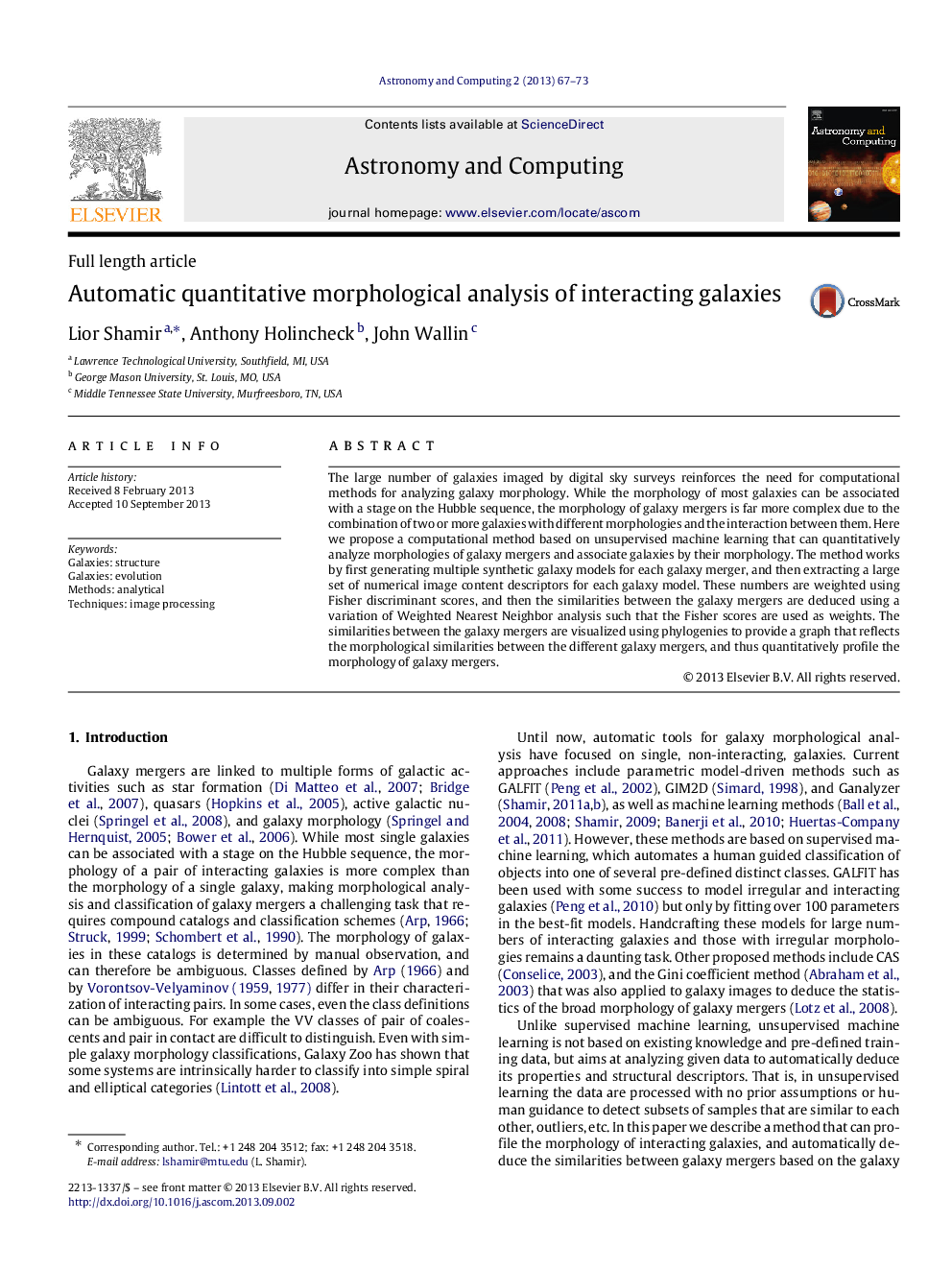| Article ID | Journal | Published Year | Pages | File Type |
|---|---|---|---|---|
| 6906270 | Astronomy and Computing | 2013 | 7 Pages |
Abstract
The large number of galaxies imaged by digital sky surveys reinforces the need for computational methods for analyzing galaxy morphology. While the morphology of most galaxies can be associated with a stage on the Hubble sequence, the morphology of galaxy mergers is far more complex due to the combination of two or more galaxies with different morphologies and the interaction between them. Here we propose a computational method based on unsupervised machine learning that can quantitatively analyze morphologies of galaxy mergers and associate galaxies by their morphology. The method works by first generating multiple synthetic galaxy models for each galaxy merger, and then extracting a large set of numerical image content descriptors for each galaxy model. These numbers are weighted using Fisher discriminant scores, and then the similarities between the galaxy mergers are deduced using a variation of Weighted Nearest Neighbor analysis such that the Fisher scores are used as weights. The similarities between the galaxy mergers are visualized using phylogenies to provide a graph that reflects the morphological similarities between the different galaxy mergers, and thus quantitatively profile the morphology of galaxy mergers.
Related Topics
Physical Sciences and Engineering
Computer Science
Computer Science Applications
Authors
Lior Shamir, Anthony Holincheck, John Wallin,
